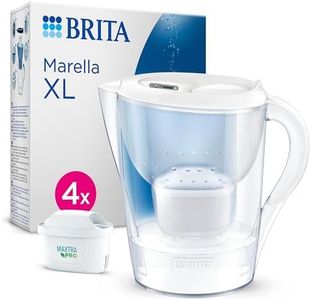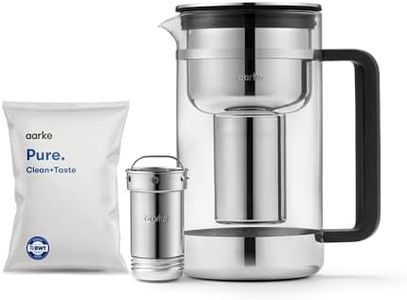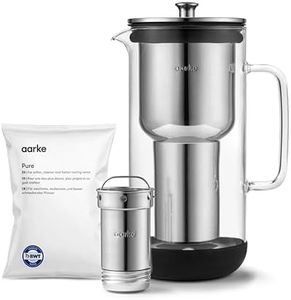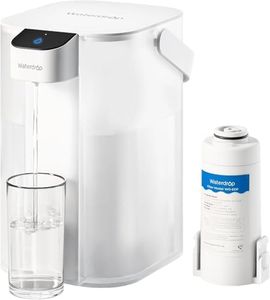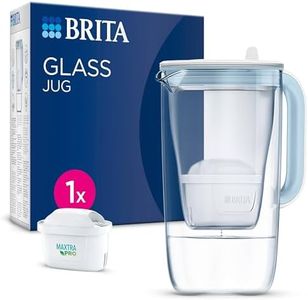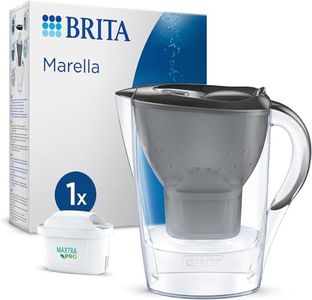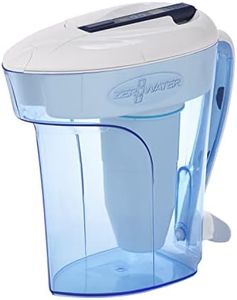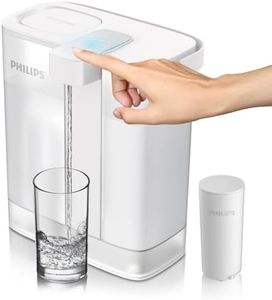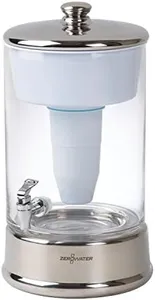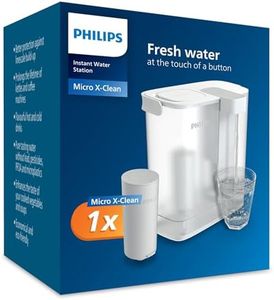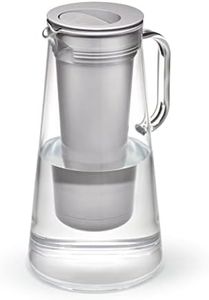We Use CookiesWe use cookies to enhance the security, performance,
functionality and for analytical and promotional activities. By continuing to browse this site you
are agreeing to our privacy policy
10 Best Water Pitchers
From leading brands and best sellers available on the web.Buying Guide for the Best Water Pitchers
Choosing the right water pitcher is all about matching your household’s needs with the pitcher’s main features. Water pitchers can help improve taste, remove impurities, and make access to clean water more convenient. It's important to think about how much water you usually need, what kind of contaminants you want to filter out, and how easy the pitcher is to use and maintain. By understanding the main specifications of water pitchers, you’ll be able to select one that fits your daily habits and ensures your water is as fresh and clean as possible.Filter TypeThe filter type refers to the technology or material used inside the pitcher to clean the water, such as activated carbon, ion exchange, or multi-stage filters. This spec is important because different filters remove different contaminants, such as chlorine, lead, or other impurities. If you just want to improve taste and odor, a basic filter is usually enough. However, for removing heavy metals or more specific contaminants, more advanced filters are required. Consider your tap water quality and what you want to filter out when choosing the filter type.
CapacityCapacity measures how much water the pitcher can hold, usually in liters or cups. This matters because it affects how often you’ll need to refill the pitcher and how well it serves your household size. Small pitchers (about 6–8 cups) are best for singles or couples. Medium pitchers (about 8–10 cups) work well for small families, while large pitchers (over 10 cups) are suitable for bigger families or heavy water users. Think about how many people will be using the pitcher and how often you want to refill it.
Filter LifeFilter life refers to how long a filter lasts before it needs to be replaced, usually measured in gallons or months. This is important for both convenience and ongoing maintenance. Short filter life means more frequent replacements, while longer filter life requires less maintenance. Typical filter lifespans range from 2–3 months or 40–100 gallons. If you want less hassle, look for pitchers with longer filter life, but always check if replacement filters are easy to find.
Pouring and Refilling DesignThis spec covers how easy it is to pour water and refill the pitcher, including the shape of the spout, the handle comfort, and if it has a flip-top or removable lid. It’s important because a well-designed pitcher makes daily use more pleasant and prevents messes. If you have limited space in your fridge or difficulty with lifting, a lighter, easy-to-handle pitcher with an accessible lid is a better choice. Test how the pitcher feels and whether you can easily refill and pour from it.
Filter Change IndicatorSome pitchers have a filter change indicator, which tells you when it’s time to replace the filter. This is important for making sure your water is always filtered properly and to avoid guessing when to get a new filter. Indicators can be manual (like a dial) or electronic (like a digital countdown). If you want extra convenience, a filter change indicator can be very helpful, especially if you don’t always remember when you last replaced the filter.
Material SafetyPitcher material is usually plastic or glass, and safety involves making sure it’s BPA-free and food safe. This matters for health reasons, as you don’t want harmful chemicals leaching into your water. If you’re worried about plastics, look for pitchers that specifically say they are BPA-free, or choose glass pitchers if you prefer a non-plastic option. Pick the material you feel safest and most comfortable using in your daily life.
